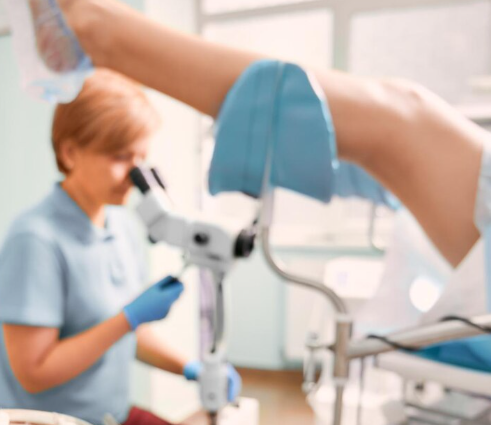Treatment Overview
The Robot-Assisted Laparoscopic Hysterectomy (RALH) in Korea is a highly advanced minimally invasive surgical technique that uses robotic systems to perform uterine removal with exceptional precision and control. This approach integrates the benefits of laparoscopic surgery with robotic-assisted technology, allowing for delicate tissue dissection, reduced trauma, and enhanced surgical accuracy.
Korea is recognized globally for excellence in robotic gynecologic surgery. Top hospitals employ cutting-edge systems such as the da Vinci® Surgical System, paired with 3D high-definition imaging and AI-assisted navigation, enabling surgeons to operate with unparalleled precision, even in complex cases.
Purpose & Benefits
Purpose:
- Remove the uterus for treatment of benign or malignant gynecologic conditions
- Reduce postoperative pain and recovery time compared to open surgery
- Preserve surrounding pelvic structures and nerve function
Benefits:
- Superior surgical precision and control
- Smaller incisions and less scarring
- Reduced blood loss during surgery
- Shorter hospital stays (often 1–2 days)
- Faster recovery and return to normal activity
- Lower risk of infection and adhesions
- Enhanced visualization for complex anatomy or pathology
Ideal Candidates
RALH is suitable for women who:
- Have uterine fibroids, adenomyosis, endometriosis, or prolapse
- Require hysterectomy for benign or early malignant conditions
- Prefer minimally invasive surgery with advanced precision
- Are concerned about postoperative recovery and function
- Are in good overall health and suitable for laparoscopic robotic surgery
Before surgery, Korean hospitals conduct detailed preoperative evaluation including imaging, hormonal assessments, and individualized surgical planning.
Possible Risks & Complications
Although RALH has a high safety profile, risks may include:
- Bleeding or infection
- Injury to surrounding organs (bladder, bowel, ureters)
- Anesthesia-related complications
- Temporary urinary or bowel changes
- Rare adhesions or pelvic discomfort
Korea’s integration of robotic precision, advanced imaging, and strict surgical protocols reduces these risks significantly.
Surgical Techniques Used
Korean specialists use several advanced approaches for robotic-assisted hysterectomy:
- Multi-Port Robotic Laparoscopy: Several small incisions allow full access to the uterus with robotic arms.
- Single-Port Robotic Surgery: Minimizes incision number for cosmetic and recovery benefits.
- Fluorescence-Guided Imaging: Improves identification of critical structures.
- 3D High-Definition Visualization: Enhances depth perception and accuracy.
- Energy-Sealing Devices: For safe and efficient vessel sealing and tissue dissection.
These methods ensure minimal invasiveness, maximum precision, and optimal preservation of surrounding structures.
Recovery & Aftercare
Recovery from RALH is faster and smoother than open hysterectomy due to smaller incisions and less tissue trauma. Most patients are discharged within 1–2 days and resume light activity within a week.
Postoperative care includes:
- Pain management and wound care
- Avoidance of strenuous activity and heavy lifting for 4–6 weeks
- Pelvic floor rehabilitation if indicated
- Regular follow-up visits to monitor healing
- Nutritional and lifestyle guidance to support recovery
Korean hospitals often offer personalized recovery plans that integrate physiotherapy, nutrition counseling, and emotional support for optimal results.
Results & Longevity
Patients experience durable benefits from RALH, including:
- Complete resolution of uterine disease symptoms
- Reduced postoperative pain and scarring
- Preservation of pelvic anatomy and function
- Lower complication rates compared to traditional hysterectomy
- Improved quality of life and rapid return to daily activities
Korea’s precision robotic surgery programs ensure high success rates and long-term patient satisfaction.
Treatment Process in Korea
Korea’s RALH programs combine surgical expertise with advanced technology:
- Preoperative Assessment: Comprehensive pelvic imaging, lab work, and surgical planning.
- Customized Surgical Planning: Determining the best robotic approach based on anatomy and condition.
- Robot-Assisted Surgery: Using high-definition imaging and robotic arms for precise tissue removal.
- Postoperative Recovery: Tailored aftercare including physiotherapy, nutrition, and follow-up assessments.
Korea’s hospitals also offer multilingual patient services, luxury recovery suites, and internationally recognized care standards, making Korea a preferred destination for RALH.
Cost Range
The cost of Robot-Assisted Laparoscopic Hysterectomy in Korea generally ranges between USD 10,000 and 18,000, depending on:
- Complexity of the case
- Hospital and surgeon reputation
- Type of robotic system used
- Postoperative care package and recovery program
This cost usually covers preoperative assessments, surgery, anesthesia, hospitalization, and follow-up care. Korea offers these high-precision procedures at competitive prices compared to Western countries.
Popular Clinics
- Samsung Medical Center (Seoul): Renowned for advanced robotic gynecologic surgery with superior outcomes.
- Asan Medical Center (Seoul): Known for robotic-assisted hysterectomy with tailored recovery programs.
- Severance Hospital (Yonsei University Health System, Seoul): Leader in robotic surgery with cutting-edge technology.
- CHA Gangnam Medical Center: Specializes in minimally invasive robotic gynecologic procedures.
- Ewha Womans University Medical Center: Offers comprehensive robotic-assisted hysterectomy with holistic patient care.



